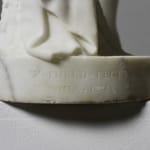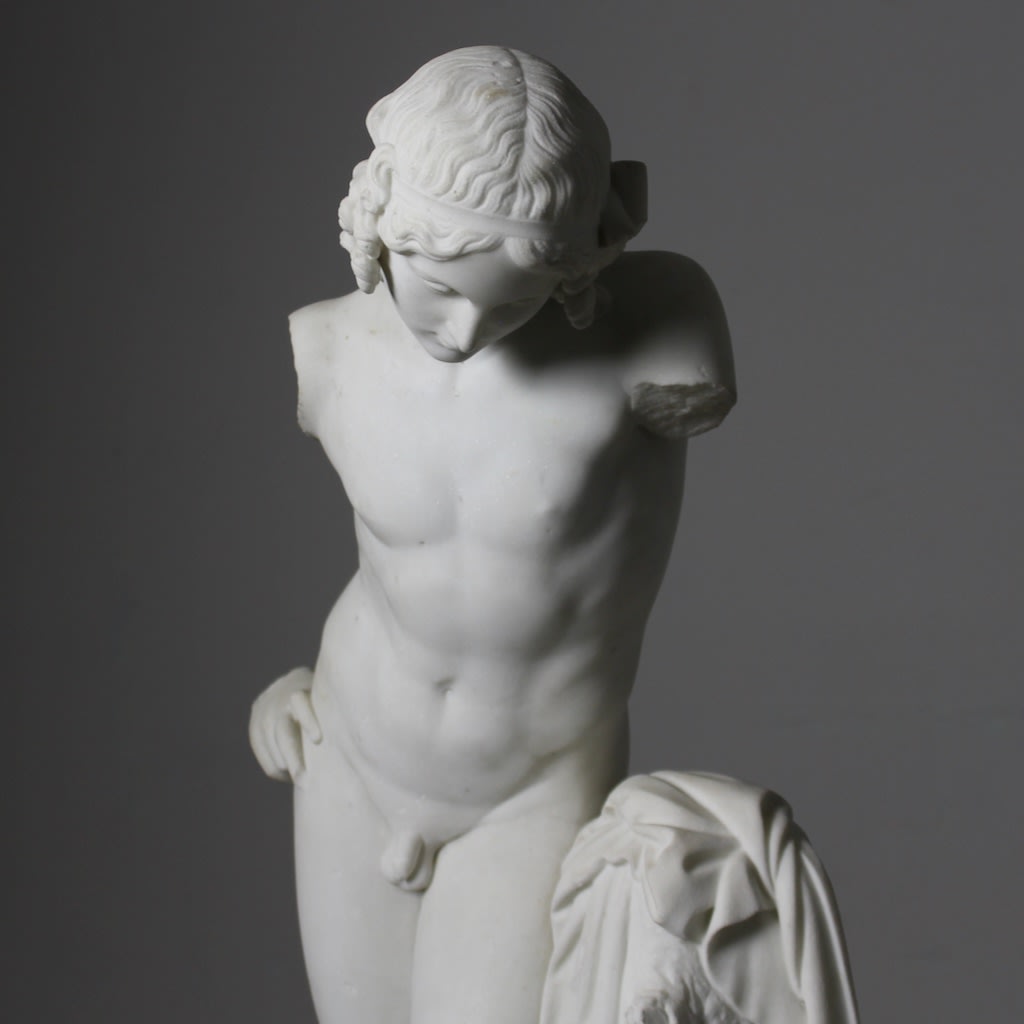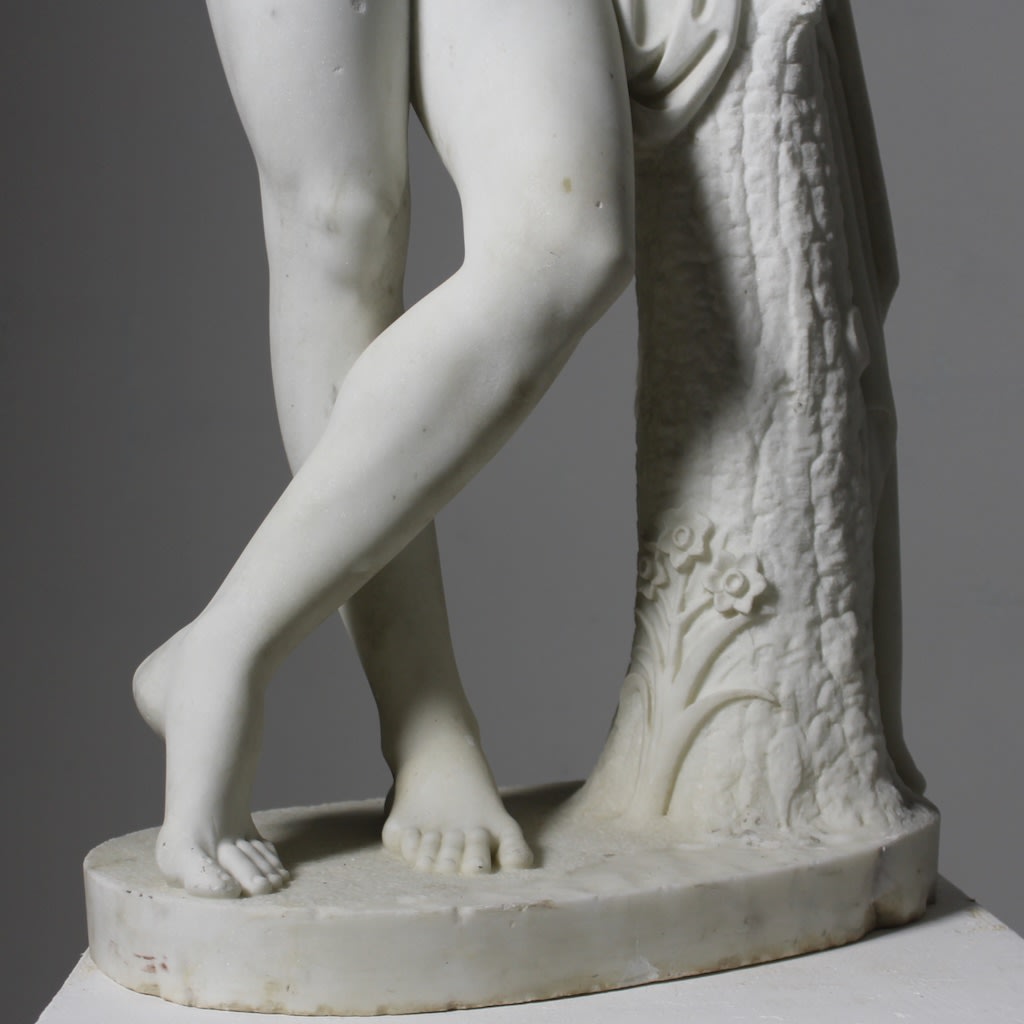William Theed The Younger Carved Marble Figure Of Narcissus ( sold )
A truly beautiful, reduced life size, carved marble figure of Narcissus, by William Theed the younger. In very good condition, with obvious losses, signed and dated ' W Theed Fecit Roma 1844'.
This figure predates the other two known versions by Theed, one at Windsor Castle dated 1845 and one at Anglesey Abbey, Cambridgeshire dated 1848 owned by the National Trust.
Narcissus the young hunter, much admired for his beauty, paused one day by a fountain and fell in love with his own reflection. Unable to speak to his beloved, he remained staring into the pool for the rest of his life, eventually dying of a broken heart, the flower that sprouted from where he had lain, was named after him.
William Theed the Younger
William Theed, also known as William Theed the younger, was born in Trentham, Staffordshire in 1804. The son of the sculptor and painter William Theed the elder (1764–1817) the young William spent his early years being trained by his father, he then went on to work in the studio of E H Baily and was then admitted to the Royal Academy School in 1820.
Travelling to Rome in 1826, William studied under the Danish sculptor Bertel Thorvaldsen and Italian Pietro Tenerani, as well as John Gibson and Richard James Wyatt. Working mostly in marble, he took several commissions for statues and busts, including those for the Duke of Lucca and the Prince and Princess of Capua.
In 1844–5 through his friend John Gibson, William admitted designs of statues for Osborne House, Narcissus at the Fountain ( now at Windsor castle ) and Psyche Lamenting the Loss of Cupid, were accepted and commissioned by Prince Albert, the then Prince consort.
William, noted for his portraiture, exhibited more than eighty works at the Royal Academy between 1824 and 1885, and from the 1840s he enjoyed the extensive patronage of the English royal family, with numerous commissions, several residing in Buckingham Palace.
Sold
This figure predates the other two known versions by Theed, one at Windsor Castle dated 1845 and one at Anglesey Abbey, Cambridgeshire dated 1848 owned by the National Trust.
Narcissus the young hunter, much admired for his beauty, paused one day by a fountain and fell in love with his own reflection. Unable to speak to his beloved, he remained staring into the pool for the rest of his life, eventually dying of a broken heart, the flower that sprouted from where he had lain, was named after him.
William Theed the Younger
William Theed, also known as William Theed the younger, was born in Trentham, Staffordshire in 1804. The son of the sculptor and painter William Theed the elder (1764–1817) the young William spent his early years being trained by his father, he then went on to work in the studio of E H Baily and was then admitted to the Royal Academy School in 1820.
Travelling to Rome in 1826, William studied under the Danish sculptor Bertel Thorvaldsen and Italian Pietro Tenerani, as well as John Gibson and Richard James Wyatt. Working mostly in marble, he took several commissions for statues and busts, including those for the Duke of Lucca and the Prince and Princess of Capua.
In 1844–5 through his friend John Gibson, William admitted designs of statues for Osborne House, Narcissus at the Fountain ( now at Windsor castle ) and Psyche Lamenting the Loss of Cupid, were accepted and commissioned by Prince Albert, the then Prince consort.
William, noted for his portraiture, exhibited more than eighty works at the Royal Academy between 1824 and 1885, and from the 1840s he enjoyed the extensive patronage of the English royal family, with numerous commissions, several residing in Buckingham Palace.
Sold
H 37" x W 18" x D 10"
Further images
-
(View a larger image of thumbnail 1
)
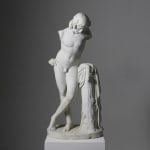
-
(View a larger image of thumbnail 2
)
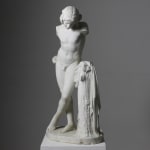
-
(View a larger image of thumbnail 3
)
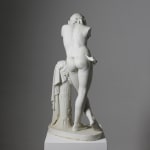
-
(View a larger image of thumbnail 4
)
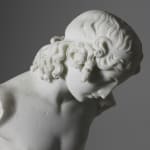
-
(View a larger image of thumbnail 5
)
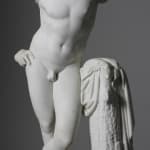
-
(View a larger image of thumbnail 6
)

-
(View a larger image of thumbnail 7
)
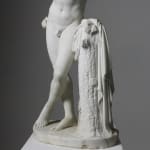
-
(View a larger image of thumbnail 8
)

-
(View a larger image of thumbnail 9
)
